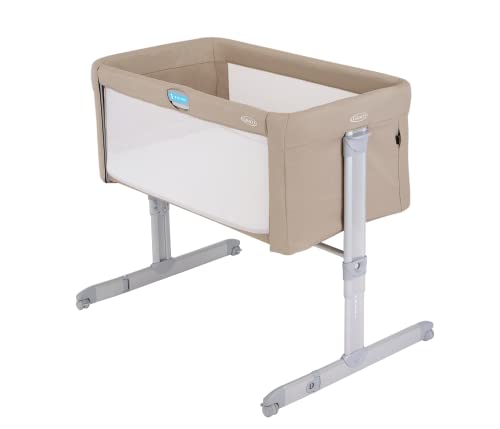
Tots and Cots: A Comprehensive Guide for Parents
When it pertains to ensuring a safe and comfortable sleeping environment for babies and toddlers, the options moms and dads make-- ranging from cribs to cots-- can significantly impact their well-being. Today's post dives deep into the intricacies of choosing the best sleeping arrangements for tots, stressing safety, design, performance, and how these options develop as a child grows.
Comprehending Tots and Cots
tots and cots generally describe young kids, especially young children aged between 1 to 3 years, while cots are the sleeping arrangements particularly created for babies and young children. The proper sleeping equipment for this age includes different kinds of cots, cribs, and young child beds.
Types of Cots
Different designs exist to satisfy the varied requirements of both parents and kids. Below is a list laying out the most typical kinds of cots readily available:
Standard Crib
- A standard crib is created for babies and generally consists of sides that can be adapted to different heights.
Convertible Crib
- This type of crib can transform into a young child bed, daybed, or full-sized bed as the child grows, making it a long-term financial investment.
Portable Crib
- Likewise called travel cots, these are light-weight and quickly foldable, perfect for traveling or smaller sized living areas.
Co-Sleeper
- A co-sleeper crib connects to the side of the parents' bed, permitting easy access while ensuring the baby has a separate and safe sleeping space.
Young child Bed
- A toddler bed is a small bed that looks like a basic bed but is created particularly for toddlers, typically featuring safety rails.
Mini Crib
- Mini cribs are smaller sized than standard cribs, making them a fantastic alternative for tight spaces, but they appropriate for babies just.
Safety Considerations
Guaranteeing security is vital when picking a cot for a child. Here are vital security guidelines parents ought to consider:
- Check for CPSC Certification: Ensure that the cot sticks to the Consumer Product Safety Commission (CPSC) requirements.
- Prevent Drop-Sides: Cots with drop-sides have been linked to safety risks, and the most current security guidelines forbid them.
- Use a Firm Mattress: A company mattress reduces the threat of suffocation and should fit comfortably within the cot.
- Keep Bedding Simple: Use a fitted sheet and avoid pillows, comforters, and stuffed animals that can present suffocation threats.
- Follow Weight and Age Guidelines: Ensure the kid has not gone beyond the cot's weight limit and is still within the suggested age.
Transitioning from a Cot to a Toddler Bed
The transition from a cot to a young child bed can be a psychological turning point for both moms and dads and children. Here are steps to relieve the transition:
Timing
Deciding when to shift can be subjective, but it's usually suggested to make the switch between 18 months and 3 years, based on elements like:
- Physical Ability: If the kid is climbing up out of the cot.
- Potty Training: Consider transitioning if the kid is potty training and requires simpler access.
- Habits: Exhibiting indications of maturity, such as following directions or revealing a desire for independence.
Tips for Making the Transition Smooth
Include Your Child: Let the kid pick their brand-new bedding or bed decor to instill excitement about the modification.
Keep Routine Consistent: Maintain the kid's bedtime routine to supply convenience throughout this duration of modification.
Describe the Change: Discuss the shift to a young child bed favorably, making it sound like a terrific adventure.
Precaution: Place the bed against the wall or usage bed rails to prevent falling throughout sleep.
Selecting the Right Bed
When selecting a toddler bed, parents need to think about factors like:
- Height: Low-profile beds are perfect for young children who may fall out throughout sleep.
- Sturdiness: Ensure the bed can endure active play as well as sleep.
- Design and Design: Choose a style that complements the kid's room and is appealing to the child.
Picking the ideal cot for your kid can be a challenging process, however comprehending the choices available, crucial safety factors to consider, and the best timing for transitioning to a toddler bed can make this journey simpler for moms and dads. Investing effort and time into these choices will guarantee that your child has a safe, comfortable, and nurturing sleep environment.
Frequently asked questions
1. What is the distinction in between a cot and a crib?
- A cot is normally a smaller bed designed for more youthful toddlers, while a crib is a larger bed that is normally suitable for babies approximately 3 years of ages.
2. When should I move my kid from a crib to a toddler bed?
- The shift time is generally in between 18 months and 3 years; this change is based on the kid's physical capabilities and behavioral signs.
3. How can I guarantee my kid is safe while sleeping?
- Always abide by safety standards, use a company bed mattress with a basic bedding arrangement, and keep an eye on the cot's weight limitation.
4. What should I do if my child tries to climb up out of the cot?

- If your child is climbing out, it may be time to consider transitioning to a young child bed to avoid falls.
5. Can I use the very same mattress when transitioning?
- Usually, it is best to replace the crib mattress with one that specifies to the young child bed. Ensure it fits snugly and sticks to safety standards.
By considering these elements, parents can model healthy sleep habits and provide their children with a safe and secure environment that promotes relaxing sleep. Buying quality sleeping plans will contribute to the kid's total advancement and happiness.















